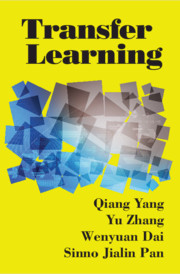Refine search
Actions for selected content:
48287 results in Computer Science
Blockchain’s future: can the decentralized blockchain community succeed in creating standards?
- Part of
-
- Journal:
- The Knowledge Engineering Review / Volume 35 / 2020
- Published online by Cambridge University Press:
- 28 January 2020, e2
-
- Article
- Export citation
Hybrid modeling and control of ICPT system with synchronous three-phase triple-parallel Buck converter
-
- Journal:
- Wireless Power Transfer / Volume 7 / Issue 1 / March 2020
- Published online by Cambridge University Press:
- 28 January 2020, pp. 10-18
- Print publication:
- March 2020
-
- Article
- Export citation
Transfer learning for Turkish named entity recognition on noisy text
-
- Journal:
- Natural Language Engineering / Volume 27 / Issue 1 / January 2021
- Published online by Cambridge University Press:
- 28 January 2020, pp. 35-64
-
- Article
- Export citation
RESIDUAL STOCHASTIC PRECEDENCE ORDER
-
- Journal:
- Probability in the Engineering and Informational Sciences / Volume 35 / Issue 3 / July 2021
- Published online by Cambridge University Press:
- 28 January 2020, pp. 496-512
-
- Article
- Export citation
Multisets, heaps, bags, families: What is a multiset?
-
- Journal:
- Mathematical Structures in Computer Science / Volume 30 / Issue 2 / February 2020
- Published online by Cambridge University Press:
- 27 January 2020, pp. 139-158
-
- Article
- Export citation
Immutable autobiography of smart cars leveraging blockchain technology
- Part of
-
- Journal:
- The Knowledge Engineering Review / Volume 35 / 2020
- Published online by Cambridge University Press:
- 27 January 2020, e3
-
- Article
- Export citation

Transfer Learning
-
- Published online:
- 24 January 2020
- Print publication:
- 13 February 2020
6 - Communities
-
- Book:
- A First Course in Network Science
- Published online:
- 05 February 2020
- Print publication:
- 23 January 2020, pp 150-185
-
- Chapter
- Export citation
Appendix A - Python Tutorial
-
- Book:
- A First Course in Network Science
- Published online:
- 05 February 2020
- Print publication:
- 23 January 2020, pp 221-237
-
- Chapter
- Export citation
Contents
-
- Book:
- A First Course in Network Science
- Published online:
- 05 February 2020
- Print publication:
- 23 January 2020, pp vii-x
-
- Chapter
- Export citation
5 - Machine Learning
-
- Book:
- Foundations of Data Science
- Published online:
- 17 January 2020
- Print publication:
- 23 January 2020, pp 109-158
-
- Chapter
- Export citation
Contents
-
- Book:
- Foundations of Data Science
- Published online:
- 17 January 2020
- Print publication:
- 23 January 2020, pp v-viii
-
- Chapter
- Export citation
References
-
- Book:
- Foundations of Data Science
- Published online:
- 17 January 2020
- Print publication:
- 23 January 2020, pp 411-420
-
- Chapter
- Export citation
Dedication
-
- Book:
- A First Course in Network Science
- Published online:
- 05 February 2020
- Print publication:
- 23 January 2020, pp v-vi
-
- Chapter
- Export citation
Frontmatter
-
- Book:
- A First Course in Network Science
- Published online:
- 05 February 2020
- Print publication:
- 23 January 2020, pp i-iv
-
- Chapter
- Export citation
Acknowledgments
-
- Book:
- A First Course in Network Science
- Published online:
- 05 February 2020
- Print publication:
- 23 January 2020, pp xv-xvi
-
- Chapter
- Export citation
0 - Introduction
-
- Book:
- A First Course in Network Science
- Published online:
- 05 February 2020
- Print publication:
- 23 January 2020, pp 1-14
-
- Chapter
- Export citation
6 - Algorithms for Massive Data Problems: Streaming, Sketching, and Sampling
-
- Book:
- Foundations of Data Science
- Published online:
- 17 January 2020
- Print publication:
- 23 January 2020, pp 159-181
-
- Chapter
- Export citation
7 - Clustering
-
- Book:
- Foundations of Data Science
- Published online:
- 17 January 2020
- Print publication:
- 23 January 2020, pp 182-214
-
- Chapter
- Export citation
11 - Wavelets
-
- Book:
- Foundations of Data Science
- Published online:
- 17 January 2020
- Print publication:
- 23 January 2020, pp 341-359
-
- Chapter
- Export citation
